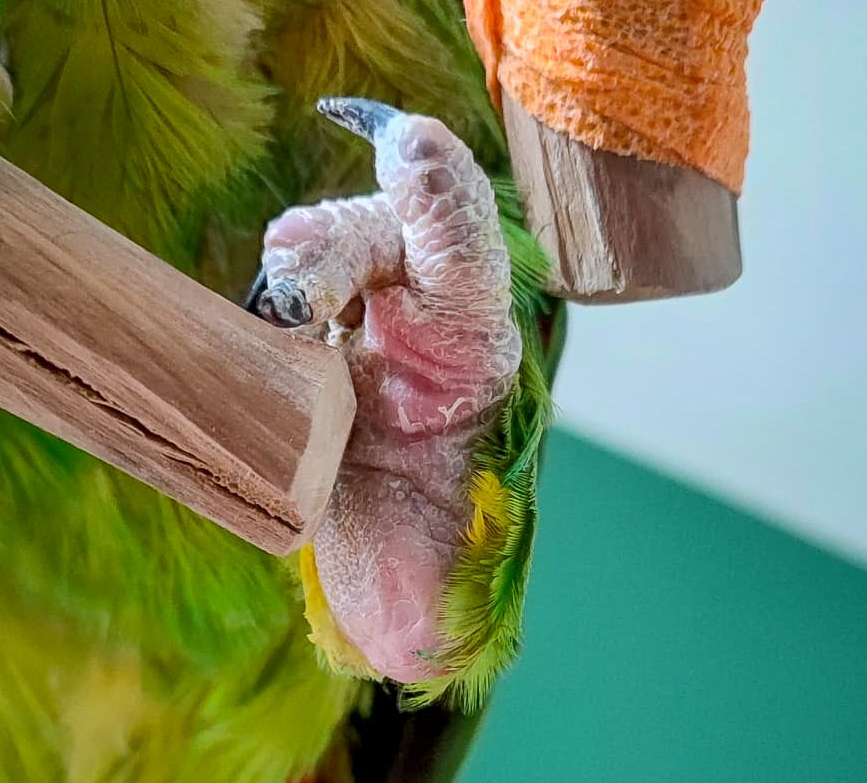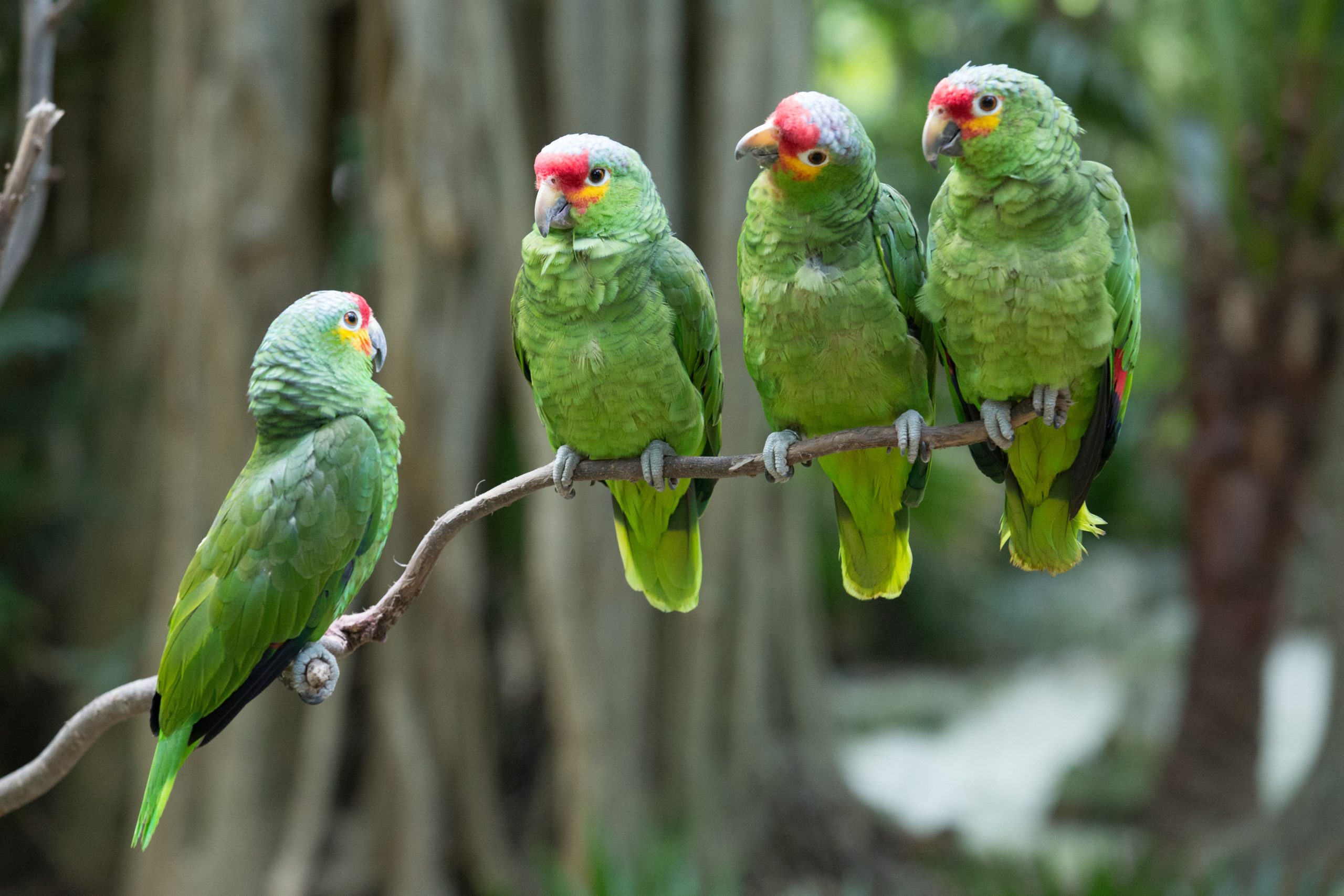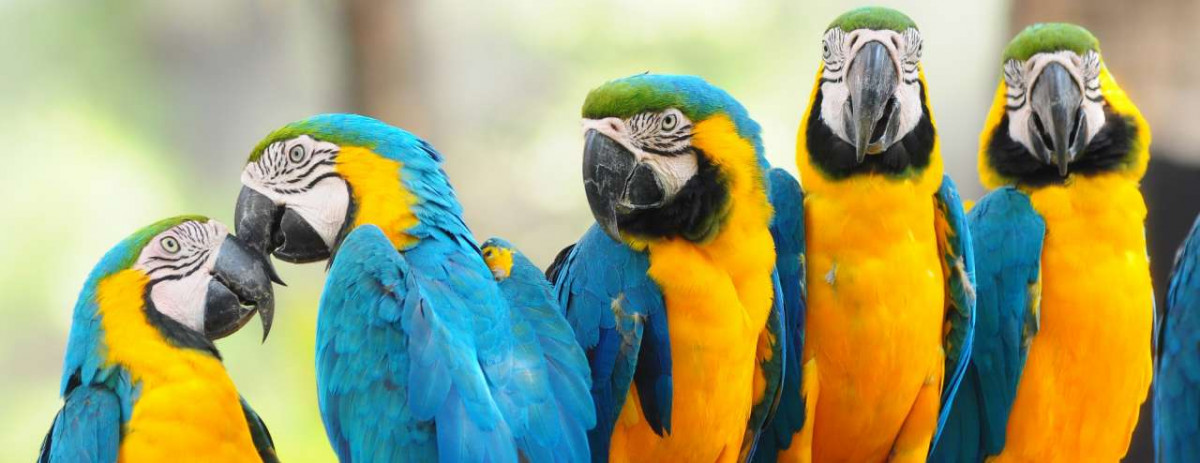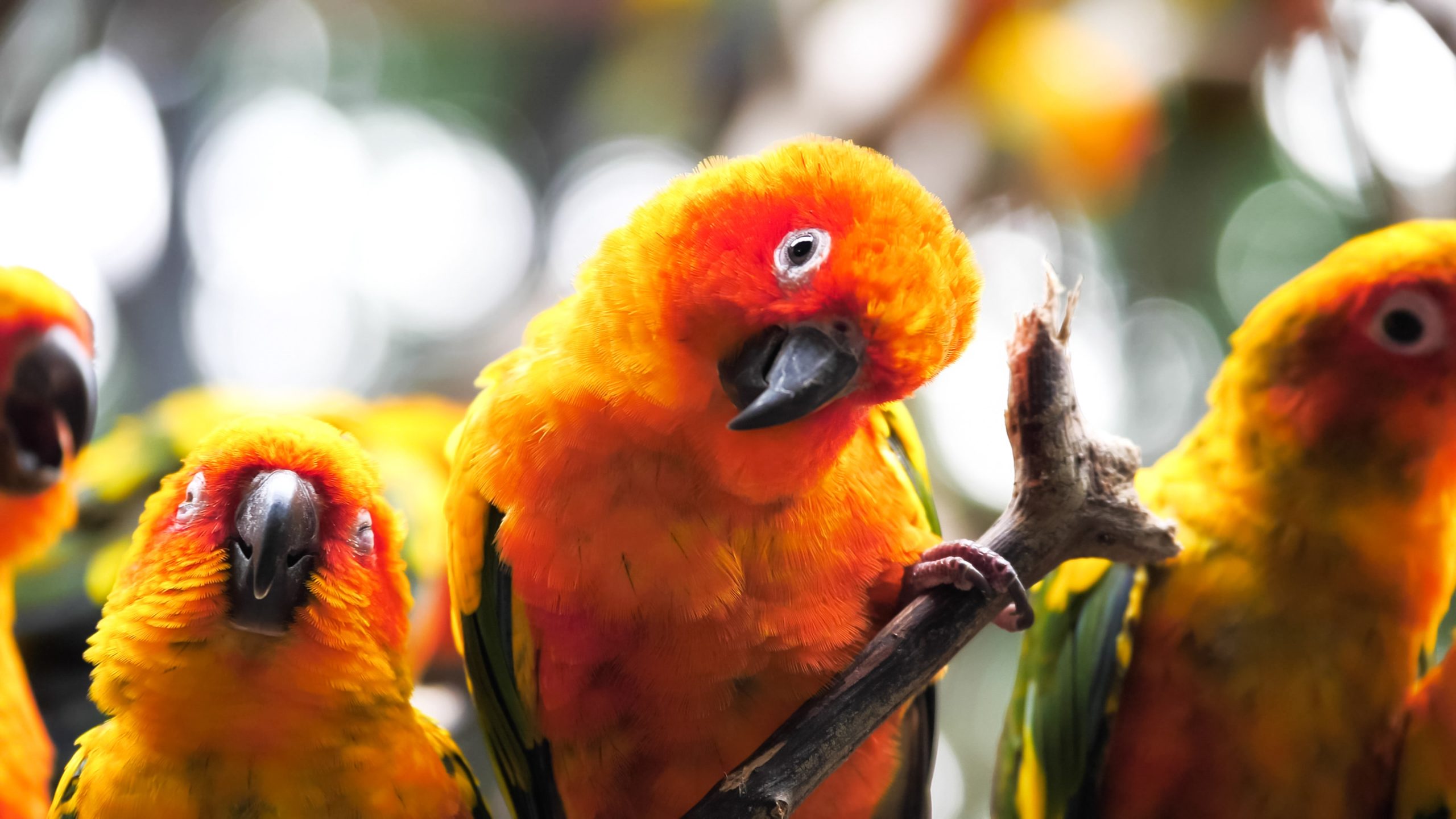Bumblefoot in birds: Prevention is better than cure
It's a common problem that is unfortunately often overlooked: Bumblefoot in birds. This condition, also known as a foot infection, can be very painful for birds. Fortunately, preventing Bumblefoot is a lot easier than curing it.
In this blog we will take a closer look at what exactly Bumblefoot is, what causes Bumblefoot and most importantly, how you can prevent Bumblefeet in your bird. With the right knowledge and care, you can ensure that your bird has healthy and happy feet. So let's quickly move on and find out how to prevent Bumblefoot from our winged friends.
What is Bumblefoot?
Bumblefoot, also known as pododermatitis, is an inflammation of the underside of the bird's foot. This condition results in damaged and inflamed skin under the foot. Bumblefoot can vary in severity, with mild redness and swelling in the early stages, significant red bumps, deep wounds and open sores in the advanced stage. The inflammation can even go so far as to inflame your bird's tendons and bones.
- Redness
- Swelling
- Small red bumps
- Wounds
- Open ulcer
- Abnormal growth of nails
- Abnormal position of the foot

How Does Bumblefoot Occur in Birds?
Bumblefoot occurs as a result of overloading the feet, which can occur with overweight or an uneven weight distribution. When a bird is overweight or its weight is not evenly distributed, the feet are put under excessive strain. This can lead to increased pressure on specific areas of the foot and can lead to the development of Bumblefoot.
Bumblefoot bears similarities to bedsores in humans. Like bedsores, bumblefoot is caused by pressure on specific areas of the foot, leading to skin damage and eventually inflammation.
One of the main reasons for bumblefoot to develop is the use of incorrect perches. Perches that are too thin, slippery or uncomfortable can put constant pressure on the bird's feet and cause friction.
In addition, a lack of the right nutrients, such as essential vitamins, can lead to a reduced quality of the skin and thus increase the risk of bumblefoot in birds.

How do you prevent Bumblefoot in birds?
Fortunately, Bumbelfoot is with the right one healthcare, nutrition en establishment good to prevent. By paying attention to these preventive measures, you can significantly reduce the risk of Bumblefoot in birds and ensure healthy and happy bird feet.
- Provide a natural and varied establishment of birdcage
- Regularly check the quality of the perches
- Keep the perches free of bird droppings
- Keep the birdcage clean and dry
- Takes care of balanced diet
- Provide if necessary additional feeding
- Control your bird's weight
- Observe your bird's feet regularly
Bird droppings are acidic and can cause irritation and burns with prolonged contact with the paws. In nature, rain washes away this problem, but as a bird owner it is your responsibility to regularly clean the perches clean to make.

Prevent Bumblefoot with natural decor
We often associate birds with trees because of the close relationship they have with each other in nature. This is because trees and their branches play an essential role in the daily lives of birds. Trees provide peace, shelter, nesting opportunities, food sources and provide social interaction.
Mother Nature has done a wonderful job of making sure that birds in the wild are less likely to suffer from foot problems such as Bumblefoot.
All the various types of branches that birds have access to in nature have a massaging effect on the bird's leg. This stimulates blood flow and prevents the formation of bedsores.
Furnish the bird cage with natural perches
It is crucial to the birdcage in a natural way to ensure the health of your bird and minimize the risk of Bumblefoot. Natural decor is an essential part of preventing the painful condition Bumblefoot in birds.
Using a variety of natural perches is essential in creating a natural setting for your bird. By mimicking the natural variation, you give your bird the opportunity to move and put weight on its feet naturally.
Fortunately, today there is a wide choice of natural ones perches for your bird. By the arrival of the brand Back ZooNature, (whose name directly reveals their mission) Naturally designing your bird's living environment has become super easy. Would you like to read more about different types of perches? Then read Lianas, natural and versatile for your pet


Creative design for healthy feet
Give free rein to your creativity when decorating the birdcage, because birds are real adventurers who like to be challenged and kept busy.
A smart way to do this is by using different materials in the interior. Think of natural branches, perches, ropes, climbing nets and also natural toys in many different sizes. This diversity provides a stimulating environment for your bird to exercise its natural climbing and scrambling skills.
Use special foot toys for birds. This interactive bird toy encourages healthy and strong bird feet.
By choosing a varied layout, you not only give your bird the necessary mental and physical stimulation, but you also contribute to a happy and healthy bird with strong legs.
How do you treat a bird with Bumblefoot?
We cannot stress enough how important it is to take steps to prevent Bumblefoot in birds. Especially because in the case of a Bumblefoot, prevention is really much easier than cure!
Preventing Bumblefoot in birds is critical as it is a persistent and painful problem. Taking preventative measures is much easier than treating Bumblefoot.
Bumblefoot is a painful condition that is difficult to treat on your own. That is why it is advisable to always consult a vet for treatment if you suspect that your bird is suffering from Bumblefoot. The treatment plan for Bumblefoot varies depending on the severity of the foot infection. This is because various factors can play a role in the development of a Bumblefoot.

Hiding discomfort
Birds are masters at hiding discomfort and this is due to their prey instinct in nature. They have learned to hide physical discomfort and pain, even when they may be suffering from health problems such as Bumblefoot.
Birds show no signs of weakness to protect themselves. As a bird owner, it is therefore essential to stay alert and take precautions to avoid Bumblefoot.
This ability to hide their discomfort can make it difficult for you as a bird owner to detect when something is wrong with your bird. It is therefore crucial to regularly observe his behavior, appetite and general health.
Prevent Bumblefoot and take care of your bird's health!
We know that Bumblefoot is a painful and persistent problem that can be easily prevented with the right precautions. By being aware of the risk factors and taking preventative measures, you can significantly reduce the risk of bumblefoot.
Take good care of your winged friend and take the necessary steps to prevent bumblefoot. Carefully choose various natural perches, provide a hygienic living environment and regularly observe the health of your bird.
If you suspect your bird has Bumblefoot or is experiencing other health problems, don't hesitate to consult an avian vet. Together we can ensure that our birds remain healthy and happy, free from painful conditions such as Bumblefoot!!
.






